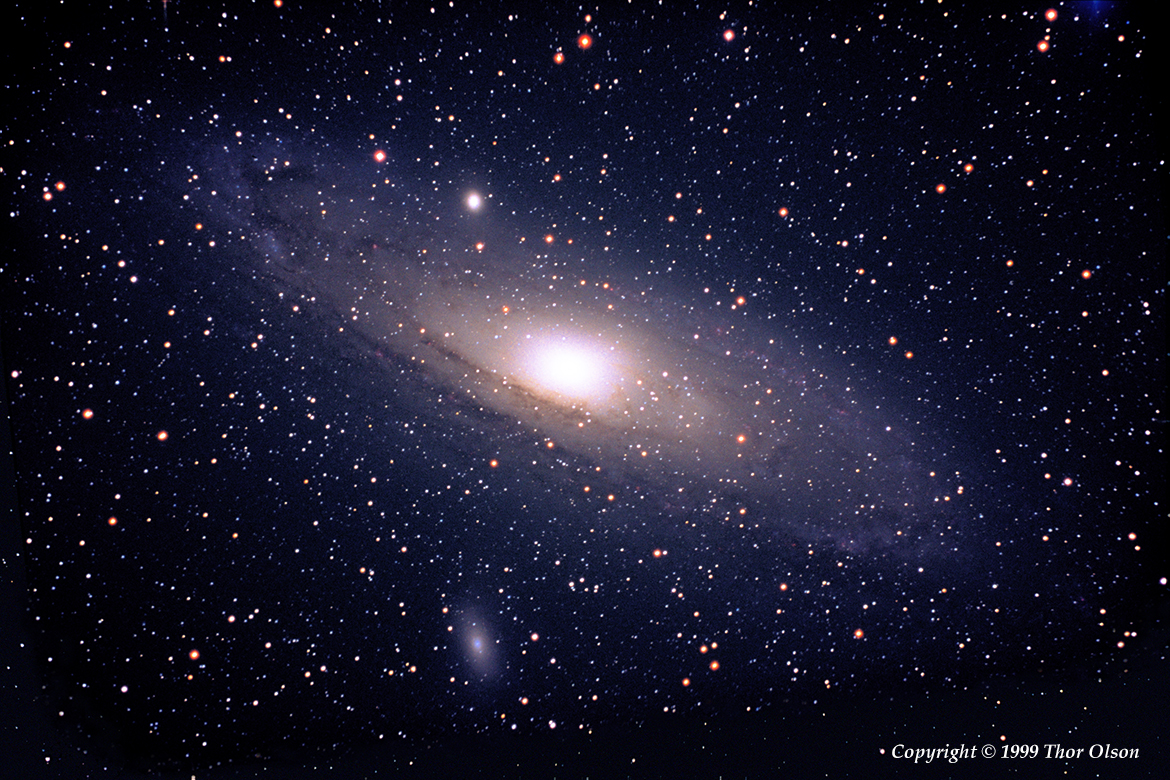
Cherry Grove Observing Site, MN, 08 Oct 1999
E200 Ektachrome, pushed +2 stops
Superposition of two 20-minute exposures
The Andromeda Galaxy spans a portion of the sky that is larger than the full moon! But a full moon would wash out the sky, making the galaxy hard to see, even with binoculars. When the sky is dark it can be seen as a hazy smudge, making it the most distant object (more than two million light years away) that we can see with the naked eye.
In the eyepiece of a telescope the smudge becomes larger, but to detect the wonderful spiral structure and faint blue outer arms of this galaxy requires the light-accumulating power of a piece of film placed at the telescope’s focal point. The stars in this picture are in the foreground, artifacts from our own galaxy, which we must look through to see into our neighbor’s part of the universe.
